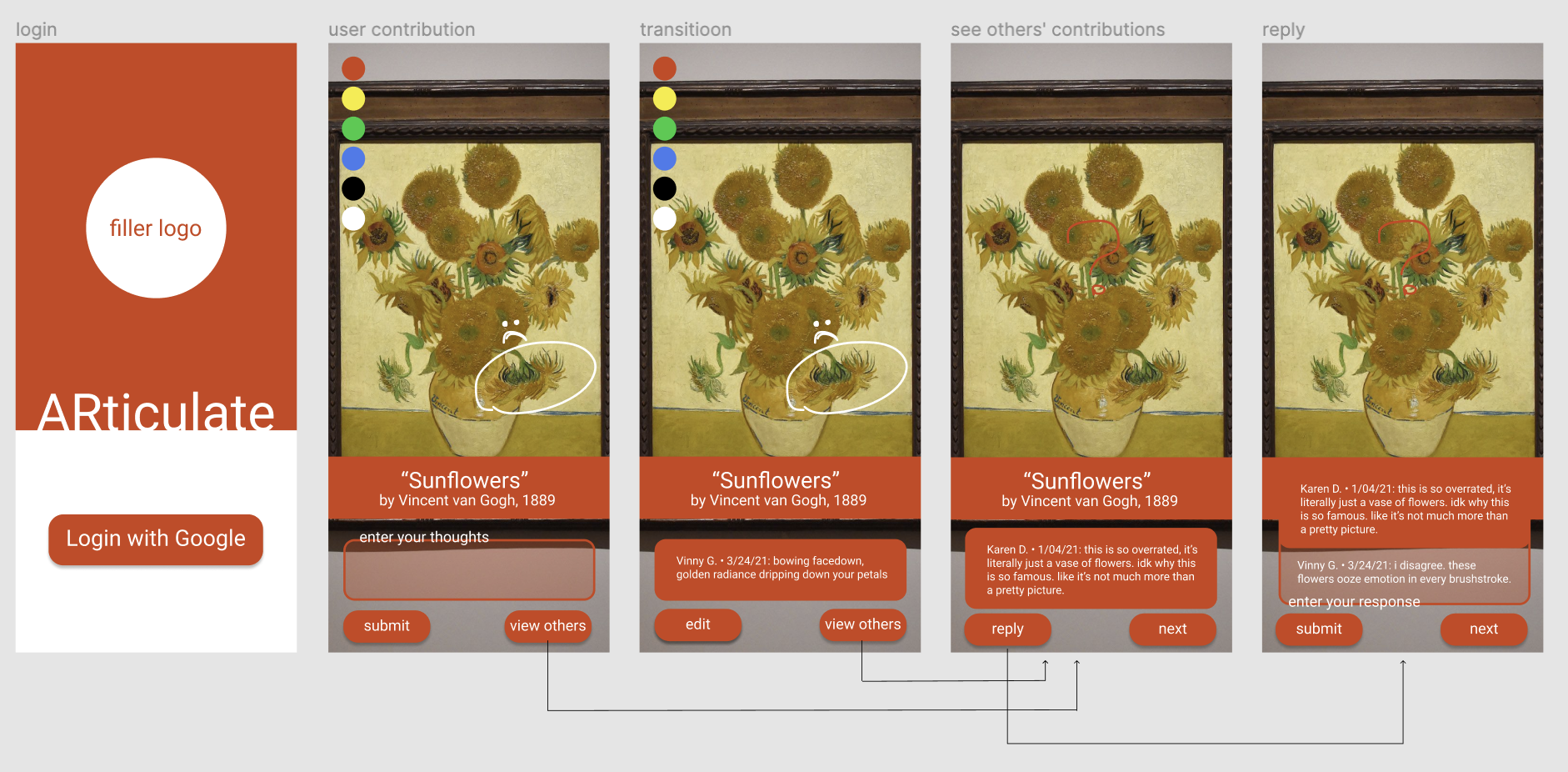ARticulate - April 1 Update
Concept Updates
We’ve updated the concept to include two modes of interaction that any user can experience: submitting responses and viewing responses. This means that users can just view others’ responses without submitting their own. Note: a visitor response includes a comment and an AR annotation.
When people are viewing responses, they will only see one at a time. There will be a button to see the next one in a randomly-generated list. We will make this list so that viewers see all responses before seeing repeats. We will give them a notice that they’ve viewed all responses if they do go through everything.
We want to incorporate the ability for users and museum staff to reply to visitor responses. We think this can allow for a deeper engagement, and an engagement that lasts for longer than the standalone trip to the museum. We imagine that museum staff could have “verified” accounts, so the interface they use is the same as the one other visitors use, increasing the scalability of this feature. We might leave this as a stretch goal until we have a better sense on how quickly we can get the most critical elements of ARticulate working.
We would like to keep the visitor-to-visitor interactions to just comments (no upvoting/downvoting). We chose to do this because we don’t anticipate enough use of this feature to give us enough useful data. If we want to have something like this, we could incorporate something like the NYT uses on it’s comment sections: the “NYT Pick.” With this feature, museum staff could highlight visitor responses they think are particularly insightful. These can be pushed to the top of the viewed list.
We have scheduled a call with Chris Atkins tomorrow to discuss these changes.
Wireframe Updates
We’ve updated the wireframe to display one (randomized) comment at a time, with a button to view the next randomly selected comment. We’ve also added a screen for replying to an existing comment. We decided that the user would be able to view other people’s responses without having to submit commentary of their own.

Code
We’ve started looking at documentation in more detail and performing some early tests to make sure our selected tools will work the way we’re expecting.